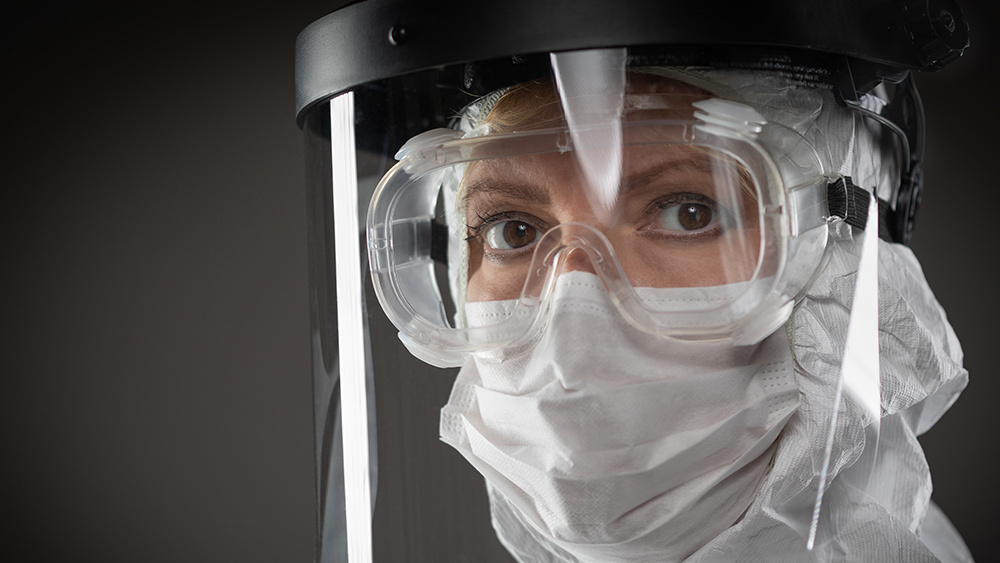Plastic face shields can’t prevent COVID-19 transmission, experts warn

Plastic face shields have become a popular alternative to face masks throughout the pandemic. Besides being less restrictive than a face mask, a face shield allows people to see the wearer’s mouth. This helps people who are hard of hearing understand the wearer better when communicating.
However, new research reveals that a face shield does not protect its wearers from the coronavirus. Published in the journal Physics of Fluids, it showed that face shields are no match for vortex rings generated when a person sneezes.
The rings capture microscopic liquid droplets called aerosols from a sneeze and transport them to the edges of the shield. But if the shield wearer happens to breathe in while a person close by sneezes, then he or she would inhale those aerosols.
Therefore, face shields offer no protection against the coronavirus if an infected person, who does not have a mask on, sneezes.
Face shields ineffective at preventing infection
In their study, researchers from Fukuoka University in Japan looked at what happens to the airflow around someone wearing a face shield when a person standing one meter in front of them sneezes. The team used a computer-generated model to simulate this situation.
They were particularly interested in sneezes because these produce a phenomenon called “vortex rings.” The rings are generated by an instantaneous ejection of fluid from an orifice, explained lead author Fujio Akagi.
The researchers found that vortex rings capture aerosols from the sneeze and transport them to both the top and bottom edges of the face shield. From there, the aerosols can get inside the shield and into the nose. The simulation showed that 4.4 percent of the aerosols reached the vicinity of the nose.
If the person wearing the shield happens to inhale while the person in front of him sneezes, the wearer will end up inhaling those aerosols as well.
So if a person with COVID-19 sneezes around another person wearing a face shield, it is likely that the latter will get infected.
Given the results of their simulation, the researchers concluded that face shields are not “highly effective” at preventing COVID-19 infection. (Related: Fauci admits vitamins C, D minimize risk of COVID-19 infection.)
Armed with this new knowledge, Akagi says they are currently developing several improved shields. “We want to contribute to keeping people safe from infection,” he added.
Face shields do not trap aerosols
Previous studies have found that face shields are ineffective at trapping aerosols. So, if an infected person wearing only a face shield sneezes or coughs, he or she can end up spreading the virus.
Makoto Tsubokura, a professor at Kobe University in Japan and a team leader at the RIKEN Center for Biosystems Dynamics Research, simulated this scenario using the world’s fastest supercomputer.
He found that almost 100 percent of aerosols measuring less than five micrometers or microns were able to escape through plastic visors. Meanwhile, larger aerosols measuring 50 microns lingered in the air.
Given the results of the simulation, Tsubokura cautioned against wearing plastic visors or face shields as an alternative to face masks. “[The] effectiveness of face guards in preventing droplets from spreading from an infected person’s mouth is limited compared with masks,” he said.
Nonetheless, Tsubokura said that face shields can still be worn by people with underlying respiratory issues and very young children who are advised against wearing face masks. Still, face shields should only be worn outdoors or in indoor settings with proper ventilation.
Making the most of face shields
Even though studies and evidence are stacked against them, face shields still have their merit. Unlike masks, plastic shields also protect the eyes from liquid droplets. They also reduce how often people touch their eyes, nose and mouth, which could help prevent transmission in the long run.
To get the most out of wearing a face shield, experts advise doing these three things as well:
- Wear it with a face mask – Face masks protect the nose and mouth, while face shields help protect the eyes and skin. Wearing a shield can also discourage frequent touching or adjusting of the mask.
- Make sure the shield fits properly – Ill-fitting face shields are uncomfortable and can even cause the wearer to touch his face or mask often. Wear a shield that comes down to chin level and does not leave a gap between the forehead and the front of the shield.
- Clean and disinfect the shield after each use – Droplets can land on the plastic surface of a face shield and become a source of infection. That’s why it’s important to clean and disinfect it with soap and warm water after each use.
For the latest news and updates concerning the coronavirus pandemic, visit Pandemic.news.
Sources include:
*** This article has been archived for your research. The original version from Natural News can be found here ***


